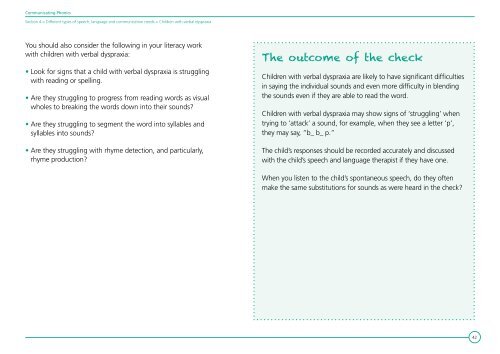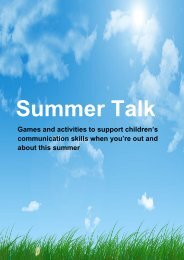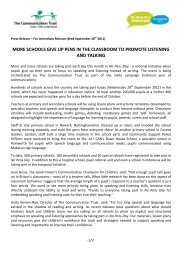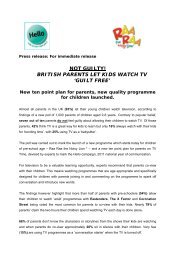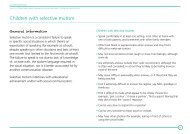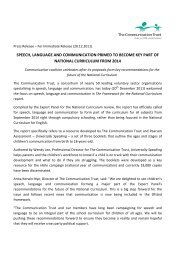Communicating Phonics - The Communication Trust
Communicating Phonics - The Communication Trust
Communicating Phonics - The Communication Trust
Create successful ePaper yourself
Turn your PDF publications into a flip-book with our unique Google optimized e-Paper software.
<strong>Communicating</strong> <strong>Phonics</strong>Section 4 > Different types of speech, language and communication needs > Children with verbal dyspraxiaYou should also consider the following in your literacy workwith children with verbal dyspraxia:• Look for signs that a child with verbal dyspraxia is strugglingwith reading or spelling.• Are they struggling to progress from reading words as visualwholes to breaking the words down into their sounds?• Are they struggling to segment the word into syllables andsyllables into sounds?• Are they struggling with rhyme detection, and particularly,rhyme production?<strong>The</strong> outcome of the checkChildren with verbal dyspraxia are likely to have significant difficultiesin saying the individual sounds and even more difficulty in blendingthe sounds even if they are able to read the word.Children with verbal dyspraxia may show signs of ‘struggling’ whentrying to ‘attack’ a sound, for example, when they see a letter ‘p’,they may say, “b_ b_ p.”<strong>The</strong> child’s responses should be recorded accurately and discussedwith the child’s speech and language therapist if they have one.When you listen to the child’s spontaneous speech, do they oftenmake the same substitutions for sounds as were heard in the check?42


